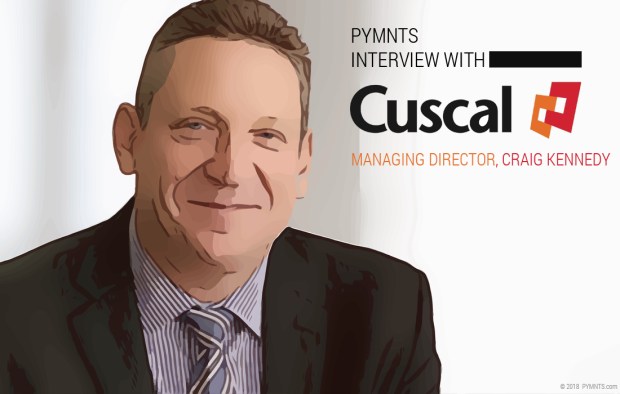Cuscal On Digital Banking Done Down Under

In Australia, time for a purely digital bank? Cuscal is putting tech and funding behind 86 400, a bank done in bits and bytes, that looks to challenge the traditional banking model. Craig Kennedy, Cuscal managing director, weighs in on why AI and mobile, combined, can help gain consumers’ trust, and take market share from the “Big Four.”
In architecture, a guiding principle is “form follows function.” In banking and payments architecture, especially in the digital realm, a corollary might be “form and function co-exist, and should be flexible enough to change rather quickly.”
In Australia, digital banking done down under, as envisioned by payments solution provider Cuscal, seeks to offer an alternative to some of the more established players in the space (traditional banks). Early next year, 86 400 — representative of the number of seconds in a day — will come to market, branchless and backed by the payments provider.
In an interview with Karen Webster, Cuscal Managing Director Craig Kennedy said the movement to offer payments functionality and a range of other services as a B2C outfit is informed, in part, by the firm’s experience in the B2B realm, where it has served small banks, credit unions and other corporate customers.
According to reports this past summer, 86 400 will let consumers have a choice in how they pay for what they buy across platforms, such as Apple Pay, and allow them to open savings accounts. Kennedy told PYMNTS that 86 400 will operate as a separate entity from Cuscal (which already exists as a deposit-taking enterprise), and will apply for its own banking license. The company will use a mix of proprietary technology and offerings from external providers to present, what he termed, a more complex and complete suite of offerings with mobile conduits in mind, where form and function are combined.
Australia remains an ideal market for digital banking and mobile transactions, said Kennedy, noting that “we are [a] little bit different than some of the other markets because we went contactless so early.” He stated, too, that high adoption rates of new payment methods remain high because that market is dominated by four banks — with 80 percent of the market share in consumer banking — and a handful of retailers.
“If you have a new payment initiative that is supported by them, it can go from zero to an overnight success almost immediately,” he said.
Yet, there is room for upstarts to take a share of consumers’ minds and wallets (including digital wallets), said Kennedy, as mobile banking (as opposed to just a mobile app) gains traction. That’s partially due to a trust factor, which is conspicuously lacking in traditional banking.
It should be noted that 86 400, currently in beta, is coming to market against a backdrop where lawmakers have been investigating the big banks for rate rigging and money laundering, as reported by Reuters.
According to reports, 86 400 said it will come to market with greater lower-cost and no-fee products than those offered by the big banks, as it will not be forced to carry the same operating structure as its competitors. Kennedy stated that, in coming to market with a mobile-only model, “just changing the form factor is not enough. It’s got to remove friction so it will lead to a better experience or grow the utility” of the services provided.
He said the firm has focused on mobile delivery and real-time transactions, tied to its payments platform, and data leveraged from its fraud services operations as the three-anchor points for its efforts. Leveraging artificial intelligence (AI) means 86 400 will offer a shift from the traditional banking model, where lenders have used data in a scattershot approach — for example, seeking to make more money out of a car that is being financed or figuring out how to sell a consumer another product.
“We are trying to turn the application of data around entirely to make it a more personalized experience through the application of technology that better anticipates” the consumers’ needs, Kennedy told Webster. He offered as another example the ability to pay an energy bill — and find out through real-time data what the average rate is for a given suburb. The consumer can see if they are paying too much and can perhaps find another service provider.
Thus, the flow of real-time information, beyond the confines of a transaction, helps cement a bond between consumer and digital bank, which Kennedy likened to “an understanding that my bank is doing something for me based on my input.” Beyond day-to-day transactions, data used in tandem with AI can help suss out spending patterns, spot fraudulent activity and bring all accounts together in one place.
Kennedy stated that 86 400 will exist, effectively, as a white-label offering to Cuscal clients, allowing for the emergence of Open Banking. He said the model will make the digital bank available for other investors and interested parties, which lets them come to market with their own products — with a fluidity that makes room for changing consumer demands. The digital bank will look to raise $250 million in capital over three years.
Moving from beta to a target go-live date in the first quarter of next year, Kennedy said, “We’ve learned there are three attributes to get right. It’s the functionality, it’s the form, and then there is the ability to maintain [the model] and change it.”
